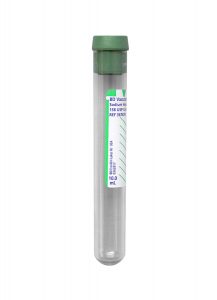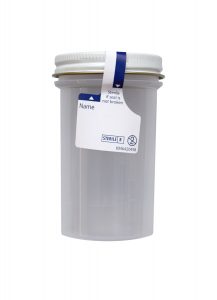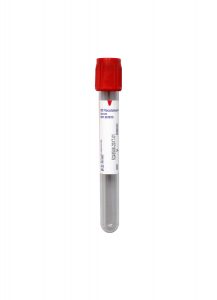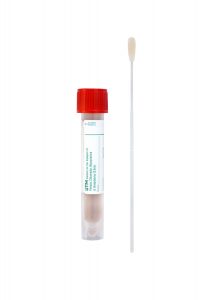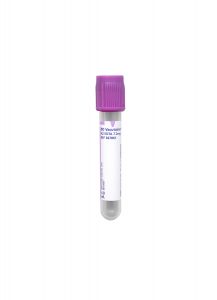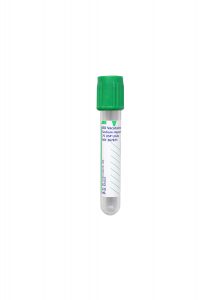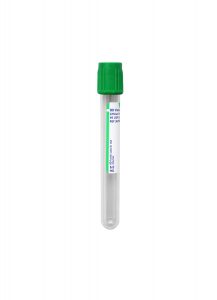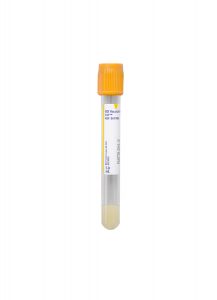Test Name
LPT to Beryllium, Blood (BLDBE)
CPT Code
86353
Methodology
3H-thymidine uptake in cell culture
Turnaround Time
10 – 14 days
Specimen Requirements
Type:
Whole blood
Volume:
30 mL
Minimum Volume:
20 mL
Specimen Container:
Green BD Vacutainer™ Plus Sodium Heparin Plastic Plasma Tube
Transport Temperature:
Ambient
Stability
Ambient:
48 hours
Refrigerated:
Unacceptable
Frozen:
Unacceptable
Reference Ranges
PHA Stim Index:
≥50.0 SI
Beryllium 1.0 uM D5:
< 3.0 SI
Beryllium 1.0 uM D6:
< 3.0 SI
Beryllium 10 uM D5:
< 3.0 SI
Beryllium 10 uM D6:
< 3.0 SI
Beryllium 100 uM D5:
< 3.0 SI
Beryllium 100 uM D6:
<3.0 SI
Candida albicans:
≥ 2.0 SI
Additional Information
Background Information
Beryllium (Be) is a lightweight metal that can cause acute or chronic diseases that may be asymptomatic. Occupational exposure typically is responsible for this; however, for the most part, it occurs in individuals carrying certain HLA alleles such as HLA–DPB1 in 83%-97% of individuals with chronic beryllium disease (CBD). CBD is much more common than acute disease nowadays which is typically a chronic non-caseating granulomatous inflammation in individuals who develop beryllium-specific, cell-mediated immunity (typically CD4+ T cells). It is estimated that circa 140,000 workers in the United States are exposed to beryllium every year. Depending on the nature of the exposure and the HLA type, CBD will develop in up to 16% of exposed subjects; thus, CBD remains an important public and occupational health issue. Beryllium-sensitized individuals may remain asymptomatic for life, but approximately 6-8% develop CBD every year.1
Testing for an individual’s sensitivity to beryllium is performed with an in vitro lymphocyte proliferation test (LPT). This is used not only as a screening assay but also as a part of the diagnostic criteria for CBD.
Clinical Indications
Beryllium is a lightweight metal with a high melting point, high strength, and good electrical conductivity. As a result, beryllium has become widely used in a variety of industrial applications, such as thermal coating, nuclear reactors, rocket heat shields, micro-circuits, brakes, X-ray tubes, golf clubs, ceramics, and dental plates. Frequently, it is formulated as an alloy or an oxide.
Correlation between the clinical status of CBD (chronic beryllium disease) and in vitro responses to beryllium in an LPT was developed.2 An elevated blood Be-LPT result may indicate beryllium sensitization, but a definitive diagnosis of CBD requires lung biopsy in the context of compatible signs and symptoms and radiological findings; therefore, as a follow-up step, individuals may undergo pulmonary evaluation, including bronchoscopy, trans-bronchial biopsy, or BAL collection for BAL Be-LPT. This is important in the differential diagnosis of CBD, as sarcoidosis can clinically mimic CBD. Extra-pulmonary CBD may also be occasionally seen such as cutaneous nodules.
Methodology
The blood lymphocyte proliferation test for beryllium sensitization (Be-LPT) is measured by radioactive 3H-thymidine uptake in a cell culture system on two different days after exposure to a range of beryllium sulfate to re-stimulate effector memory CD4+ T cells in peripheral blood. As a control, a common mitogen, phytohemagglutinin (PHA), and Candida antigen are used to ensure acceptable and normal T cell proliferative responses. Emitted beta rays are counted by a beta counter instrument in count per minute (CPM), the stimulation index (SI) is calculated and reported out along with an interpretive comment. The results are reviewed by staff.
Interpretation
The S.I. for PHA should be ≥50.0.
The S.I. for Candida albicans should be ≥2.0 to indicate normal T-cell function.
If all six beryllium indices are less than 3.0, this signifies a normal result, meaning no evidence of beryllium sensitization.
Ratios of greater-than-or-equal-to 3.0 in two or more beryllium indices constitute an abnormal response that is compatible with beryllium hypersensitivity.
References
1. McCanlies EC, Kreiss K, Andrew M, Weston A. 2003. HLA-DBP1 and chronic beryllium disease: a HuGE review. Am. J Epidemiology. 157:388-398.
2. Deodhar SD, Barna BP, Van Ordstrand HS. 1973. A study of the immunologic aspects of chronic berylliosis. Chest. 63:309-313.
3. Barna BP, Culver DA, Yen-Lieberman B, Dweik RA, Thomassen MJ. Clinical application of Beryllium Lymphocyte Proliferation Testing. Clin and Diag Lab Immunol. 2003;10:990-994.
4. U. S. Department of Labor, Occupational Safety and Health Administration. Directorate of Science, Technology and Medicine Office of Science and Technology Assessment, Safety and Health Information Bulletin, September 2, 1999.

